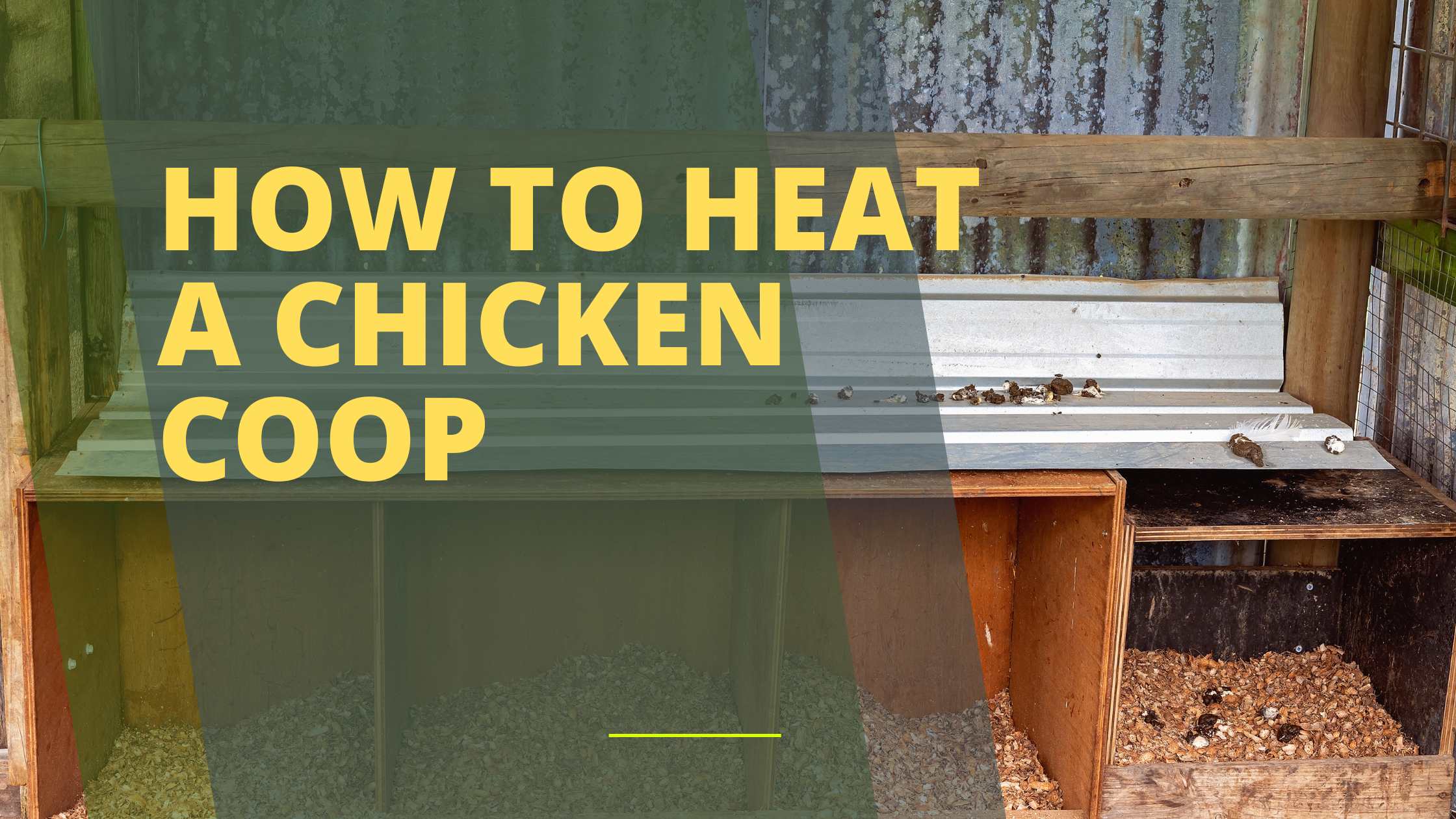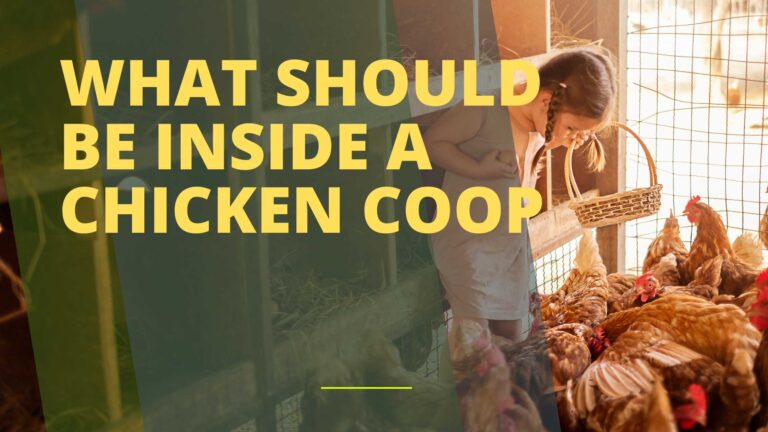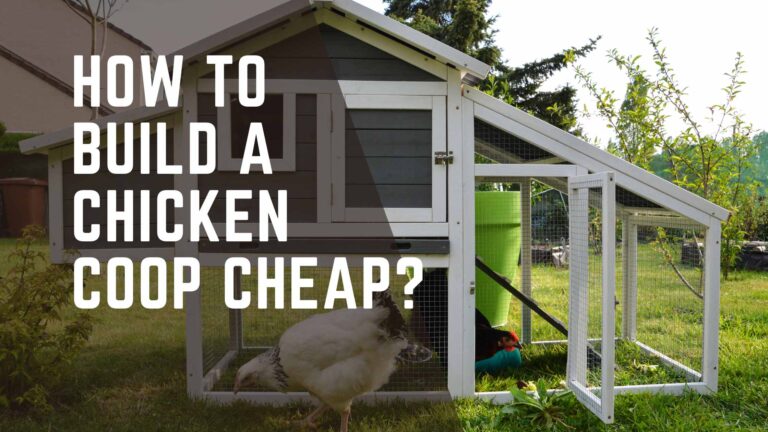To heat a chicken coop, use a safe radiant heater or mount a flat-panel heater. Alternative methods include heat lamps and insulating the coop.
Warming a chicken coop is essential during colder months to ensure the health and productivity of your poultry. Creating a comfortable environment encourages regular laying patterns and prevents frostbite among the flock. The key is to maintain a balance, providing sufficient warmth without overheating the space, as chickens are quite good at maintaining their body temperature with their feathers.
How to Heat a Chicken Coop? Always prioritize safety to reduce fire hazards and consider energy efficiency for sustainability. Properly insulated coops require less additional heat, so it’s worth investing in good insulation before winter comes. Implementing these methods will create a cozy, safe haven for your feathered residents without risking their safety or your peace of mind.

Credit: www.hobbyfarms.com
Heating Challenges In Chicken Coops
Keeping chickens warm during cold weather is crucial. Heating a chicken coop properly presents unique challenges. Owners must maintain a balanced temperature. This keeps the chickens healthy and productive. Let’s explore what it takes to heat a chicken coop effectively.
Temperature Requirements For Chickens
Chickens need a comfortable living environment. The ideal temperature range is between 65 to 75 degrees Fahrenheit. Below this range, chickens may start to feel the chill. Above, they can become overheated. Use these tips to help maintain this temperature:
- Check the coop’s temperature regularly with a thermometer.
- Insulate the coop to keep the heat in.
- Provide a heat lamp during especially cold nights.
Potential Risks Of Improper Heating
Incorrect heating poses dangers. Here are some risks:
- Fire hazards from faulty equipment or improper use of heaters.
- Overheating can cause heat stress in chickens.
- Poor air quality from unvented heaters can harm chickens’ respiratory systems.
Keep these risks in mind and act to prevent them. Use heaters designed for coops. Always follow the manufacturer’s instructions. Ensure good ventilation is in place.
Electric Heaters: A Popular Choice
As winter approaches, keeping your chickens warm becomes a top priority. Electric heaters offer a reliable, controllable source of warmth for your feathered friends. They’re easy to use, with options for every coop size. Explore the various electric heater types and crucial safety tips to protect your flock and coop.
Types Of Electric Heaters
Selecting the right electric heater ensures your chickens enjoy a cozy environment. Here are the common types:
- Flat Panel Heaters: These heaters mount on coop walls, producing gentle, consistent heat.
- Infrared Bulbs: They radiate heat directly to the chickens, mimicking the sun’s warmth.
- Radiant Tube Heaters: Ideal for larger coops, they provide warmth without taking up much space.
- Oil-filled Radiators: These offer steady heat and are less prone to fire risks. They require enough space for safe operation.
Safety Considerations For Electric Options
Your chickens’ safety is essential. Consider these points when using electric heaters:
- Installation: Always follow the manufacturer’s instructions closely.
- Wiring: Ensure all wires are out of reach to prevent pecking and damage.
- Ventilation: Proper airflow is critical to avoid moisture build-up and maintain air quality.
- Fire Safety: Keep heaters away from flammable materials and check them regularly.
- Thermostats: Use thermostats for automatic temperature control, reducing the risk of overheating.
Remember, regularly inspect your setup and replace any damaged components immediately to keep your coop safe.
Solar Power: Eco-friendly Heat Solutions
Embracing solar power offers a sustainable way to keep chickens warm. Solar energy, abundant and renewable, aligns with eco-friendly practices. Heating a chicken coop with solar power protects birds from the cold without relying on traditional electricity. This efficient method ensures a steady temperature, promoting the health and productivity of your flock.
Installing Solar Panels
Solar panels capture sunlight and convert it into electricity. This process involves a few key steps:
- Select a south-facing location on your coop’s roof or nearby structure for maximum sunlight exposure.
- Work with a professional to determine the appropriate size for your coop’s energy needs.
- Install mounting hardware and secure solar panels in place.
- Connect panels to a battery system to store excess energy for use when the sun isn’t shining.
Maximizing Efficiency Of Solar Heat
To get the most out of solar heat, follow these guidelines:
- Insulate the chicken coop to retain warmth.
- Use a thermal mass, like water barrels, to absorb daytime heat and release it at night.
- Combine solar panels with a solar air heater for direct heating during sunny days.
- Regularly clean solar panels for optimal performance.
By implementing these strategies, you can ensure your coop remains comfortably warm through the harsh winter months.
Insulation: First Line Of Defense Against The Cold
Keeping chickens warm during chilly seasons is crucial. Insulation stands as the first barrier
against the cold. Proper insulation traps warmth inside the coop. It keeps your feathered friends
cozy without continuous use of heaters. Let’s dive into selecting the best insulation material and
ensuring it retains heat effectively.
Choosing The Right Insulation Material
Selecting the appropriate insulation material is vital. The right choice will keep your chickens warm
and safe. Foam boards, fiberglass, and reflective materials are popular choices. Consider the
r-value, which indicates the material’s resistance to heat flow. Materials with a higher r-value
are better at keeping heat in. Remember, safety is paramount. Choose materials that are non-toxic
and resistant to moisture to prevent mold.
| Material | R-value | Features |
|---|---|---|
| Foam Boards | High | Moisture-resistant, Effective |
| Fiberglass | Varies | Cost-effective, Commonly used |
| Reflective | Low to Moderate | Reflects heat, Easy to install |
Proper Installation To Retain Heat
Installing insulation correctly is just as important as the material. Ensure no gaps or leaks
are present where heat might escape. Use sealant around the edges of the insulation panels for a
tight fit. Cover all walls and the roof to form a complete thermal barrier. The coop’s door
and ventilation systems need attention too. They should allow air in but keep the cold out. Consult a
professional if unsure about the installation process.
- Seal gaps and leaks with a robust sealant
- Insulate walls, roof, and corners thoroughly
- Check door and air vents for proper insulation
Radiant Heat Practices
Keeping your feathered friends warm during the colder months is crucial for their health and egg production. As backyard chicken keepers explore efficient heating solutions, Radiant Heat Practices stand out for their gentle, sun-like warmth, and cost-effectiveness.
Understanding Radiant Heat Systems
Radiant heat systems mirror the natural warmth from the sun. This technology warms objects and birds directly rather than heating the air. Chickens absorb this heat, ensuring a cozy, draft-free environment. These systems typically come as panels or lamps and are easy to install.
- Easy to mount on coop walls or ceilings
- Low electricity consumption
- Targeted warmth for birds
Comparison With Traditional Heat Sources
Radiant heat offers distinct advantages over traditional methods. Unlike heat lamps which can be a fire hazard, radiant heat panels are safer. They do not overheat, reducing risk and energy use. Below is a comparison in table format.
| Radiant Heat Systems | Traditional Heat Lamps |
|---|---|
| Directly warm areas or objects | Heat the air, often unevenly |
| Low risk of fire | Potential fire hazard |
| Energy-efficient | Higher energy consumption |
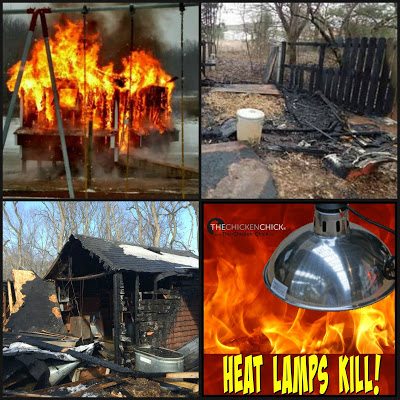
Credit: the-chicken-chick.com
Diy Heating Solutions
Keeping your chickens warm during cold weather doesn’t require expensive equipment. Creative do-it-yourself solutions offer cost-effective ways to heat your coop. Let’s explore these ideas that you can easily implement with some basic tools and materials.
Building A Diy Heater
A homemade chicken coop heater adds warmth without high costs.
- Start with a metal paint can.
- Place a 40-watt incandescent light bulb inside.
- Cover it with a secured lid.
- Ensure ample ventilation to prevent overheating.
This simple device emits enough heat for a small space. Always place it away from flammable materials. Safety comes first!
Monitoring Temperature With Homemade Devices
Keep track of the temperature with a DIY thermometer.
- Fill a bottle with colored water.
- Place a straw tightly into the opening.
- Mark levels on the straw as the temperature changes.
This homemade thermometer gives a visual guide to temperature shifts. When the coop’s warmth is optimal, your chickens stay happy and healthy!
Heat Lamps: Controversial And Careful Use
Keeping chickens warm during cold months is a challenge for many farmers. Heat lamps are a popular choice but come with significant risks. Understanding the proper use and safety measures is crucial. This section explores the controversies and guides on using heat lamps correctly.
Risks Associated With Heat Lamps
Fire hazards pose a significant risk when using heat lamps. Poor installation or faulty equipment can lead to disaster. Chicks might knock over a lamp, leading to bedding catching fire. Overheating is another concern. It can cause distress among chickens. Another risk is the potential for burns. Birds too close to the lamp may get hurt.
- Electrical fires from damaged cords or sockets
- Shattered bulbs releasing glass and toxic fumes
- Stress-induced pecking from overheated birds
Safe Placement And Use Of Heat Lamps
For safe use, follow these guidelines:
- Securely mount the lamp above bird reach.
- Use a guard to prevent contact with the bulb.
- Choose lamps with a safety certification.
- Regularly inspect for damage or wear.
The ideal placement involves a height that distributes warmth evenly. It should not target a bird directly. Create a warm zone and a cooler zone to allow chickens choice. This promotes healthy behavior as chickens can self-regulate their temperature.
Thermostats are helpful tools. They ensure consistent temperature and automatic shutoff to prevent overheating. Dual bulb setups offer a safeguard. If one bulb fails, the other continues to provide heat.
In summary, heat lamps require careful management. Proper placement, routine inspections, and extra safety features are necessary. These guidelines help to protect your feathered friends from the cold while minimizing risks.
Heating Coop On A Budget
Keeping chickens warm does not have to break the bank. Heating your chicken coop on a budget is possible with savvy tips and tricks. With the right approach, you can provide a cozy environment for your poultry without a hefty price tag.
Cost-effective Heating Gadgets
When it comes to budget-friendly heating options, several gadgets stand out:
- Flat Panel Radiant Heaters: Energy-efficient and safe, they keep chickens warm.
- Thermal Mats: Use under roosting areas to offer warmth where birds spend the night.
- Heat Lamps with Thermostats: They turn on only when temperatures drop, saving energy.
| Heating Gadget | Average Cost | Features |
|---|---|---|
| Flat Panel Heater | $20-$40 | Energy-efficient, Safe |
| Thermal Mat | $10-$30 | Targeted Warmth, Durable |
| Heat Lamp with Thermostat | $15-$50 | Automatic, Energy Saving |
Strategies For Reducing Energy Bills
Slash your bills with these smart energy-saving strategies:
- Insulate the coop properly to retain heat.
- Choose LED bulbs for additional light, as they consume less power.
- Only heat the coop to the minimum temperature chickens need, which is around freezing.
Insulation can be from items like straw bales or foam boards. Keeping the coop clean and free of drafts is also key. Remember, a snug, draft-free space uses less energy to heat.
Temperature Monitoring And Control
Keeping your chickens warm through chilly seasons is crucial for their health and egg production. Monitoring the temperature within the coop is the key to providing a cozy and safe environment. Too cold and your flock may suffer, too warm and you waste energy and create potential hazards. Let’s delve into must-have tools and tech for optimal temperature management.
Importance Of Thermometers And Thermostats
Ensuring the right temperature at all times starts with the right tools. Thermometers help you keep track of the coop’s climate. Place thermometers in various spots to get accurate readings.
Thermostats go hand in hand with heaters. They switch heaters on or off to keep temperatures stable. This prevents overheating and conserves energy, which saves money and keeps chickens safe.
- Key placement: Hang thermometers at chicken level, away from drafts and doors.
- Types to consider:
- Digital thermometers for precise readings
- Mercury thermometers for durability and reliability
- Use thermostats that can handle the wattage of your heaters
Automated Systems For Consistent Heat Management
Take your coop’s climate control to the next level with automated systems. These systems manage heaters, ventilation, and even humidity with minimal human intervention.
| Feature | Benefit |
|---|---|
| Automatic Controllers | Maintain steady temperatures effortlessly |
| Remote Monitoring | Check temperatures from your phone or computer |
| Alert Systems | Receive notifications if temperatures drop or rise significantly |
With automated temperature controls, your coop could stay warm even when you’re not around. This peace of mind is invaluable, especially in extreme weather.
Modern automation features:
- Timers for scheduled heating
- Sensors for real-time adjustments
- Wi-Fi enabled devices for remote oversight
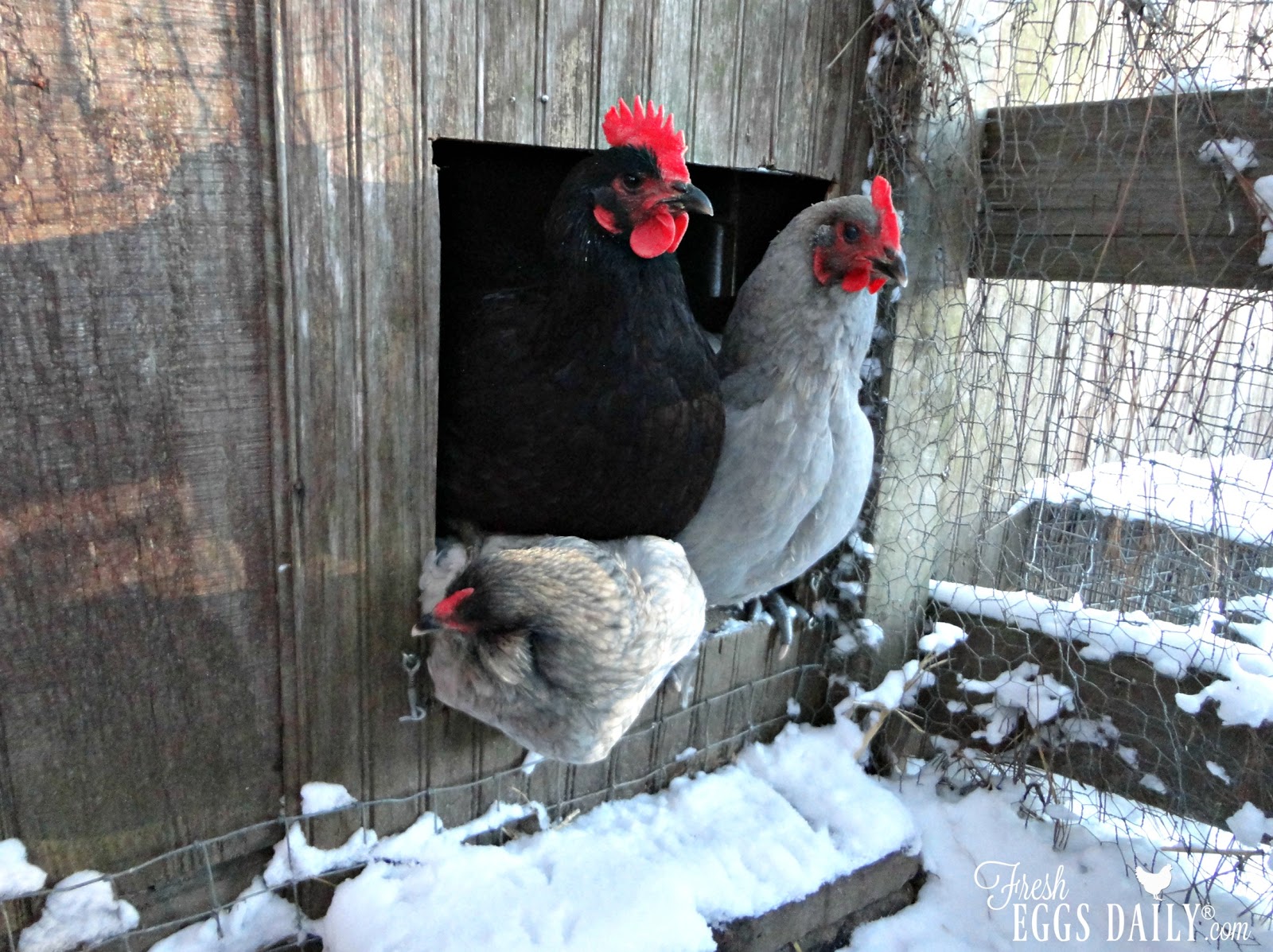
Credit: www.fresheggsdaily.blog
Precautions And Fire Safety
Ensuring the warmth of your chicken coop during colder months is critical, yet it’s equally important to prioritize fire safety. Taking precautions can help prevent tragic accidents while keeping your flock cozy and safe. Below, we’ll explore effective strategies to mitigate fire risks and implement emergency plans tailored for chicken safety.
Preventing Fire Hazards In Coops
- Choose the right heat sources: Opt for safer heating options like panel heaters over heat lamps.
- Regular inspections: Check wires and heating devices for signs of wear or damage.
- Maintain cleanliness: A clean coop reduces flammable materials, lessening fire risk.
- Secure heating units: Ensure heat sources are stable and cannot be knocked over.
- Keep flammables away: Store bedding and feeds away from heat sources.
- Install a smoke detector: A battery-powered smoke detector adds an extra layer of protection.
Emergency Plans For Chicken Safety
- Map an evacuation route: Design a clear path to remove chickens quickly and safely.
- Practice emergency drills: Familiarize yourself with the evacuation process.
- Accessible tools: Keep fire extinguishers and other safety tools handy.
- Create a contact list: Assemble a go-to list of emergency contacts, including veterinarians.
- Prepare a coop checklist: Maintain a list of all coop inhabitants and assets.
- Conduct regular fire drills: Train family members and farmhands on the safety protocol.
| Action | Details | Responsible Person |
|---|---|---|
| Fire Detection | Check smoke detectors monthly | Farm Manager |
| Evacuation | Direct chickens through planned route | Assigned Staff |
| Emergency Contact | Call local fire department | Designated Caller |
Conclusion
Warming your chicken coop efficiently requires simple, safe strategies. Insulation, proper heating devices, and regular temperature checks will do the trick. Remember, happy hens mean healthy eggs. So, invest time in creating a cozy haven for your flock this winter, ensuring their comfort and productivity.
Stay warm and keep clucking!

